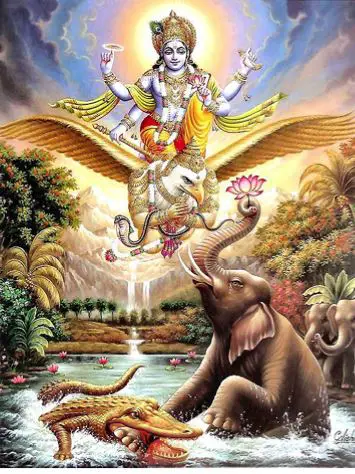The 18 Puranas are a vast genre of Indian literature about a wide range of topics, particularly about legends and other traditional lore.
They are known for the intricate layers of symbolism depicted within their stories.
Composed originally in Sanskrit and in other Indian languages, several of these texts are named after major Hindu deities such as Vishnu, Shiva, Brahma, and Adi Shakti.
The Puranic literature is encyclopedic and includes diverse topics such as cosmogony, cosmology, genealogies of gods, goddesses, kings, heroes, sages, and demigods, folk tales, pilgrimages, temples, medicine, astronomy, grammar, mineralogy, humor, love stories, as well as theology and philosophy.
There are 18 Maha (major) and 18 Upa (minor) Purana.
The names of the 18 Maha Puranas are:
Agni Purana, Bhagavata Purana, Bhavishya Purana, Brahmanda Purana, Brahmavavarta Purana, Garuda Purana, Kurma Purana, Linga Purana, Markendya Purana, Matsya Purana, Naradiya or Narada Purana, Padma Purana, Shiva Purana, Skanda Purana, Vamana Purana, Varaha Purana, Vayu Purana and Vishnu Purana.
The widely popular one is Bhagavata Purana.
The Bhagavata Purana, also known as the Srimad Bhagavatam, Srimad Bhagavata Mahapurana, or simply Bhagavata, is one of Hinduism’s eighteen great Puranas (Mahapuranas).
Composed in Sanskrit and traditionally attributed to Veda Vyasa, it promotes bhakti (devotion) towards Krishna, an avatar of Vishnu.
The text integrates themes from the Advaita (monism) philosophy of Adi Shankara, the Vishishtadvaita (qualified monism) of Ramanujacharya and the Dvaita (dualism) of Madhvacharya.
The Bhagavata Purana discusses a wide range of topics including cosmology, astronomy, genealogy, geography, legend, music, dance, yoga, and culture.
It is a central text in Vaishnavism, a Hindu tradition that reveres Vishnu. The text presents a form of religion (dharma) that competes with that of the Vedas, wherein bhakti ultimately leads to self-knowledge, salvation (moksha), and bliss.
The text consists of twelve books (skandhas or cantos) totaling 332 chapters (adhyayas) and 18,000 verses.
The tenth book, with about 4,000 verses, has been the most popular and widely studied.
The Hindu Maha Purana are traditionally attributed to “Vyasa”, but many scholars considered them likely the work of many authors over the centuries.
They have been influential in the Hindu culture inspiring major national and regional annual festivals of Hinduism.
What are the Upa Puranas?
The Upa Purana, also known as the Minor Purana, are a genre of Hindu religious texts consisting of many compilations differentiated from the Mahapuranas by styling them as secondary Puranas using the prefix Upa (secondary).
Lists of eighteen Upapuranas occur in a number of texts, which include the Kurma Purana, the Garuda Purana, the Brihaddharma Purana, the Sanat Kumara Purana, the Ekamra Purana, the Vāruṇa Purāṇa, the Pārāśara Purāṇa, the Skanda Purana, the Padma Purana, the Brahmavaivarta Purana, the Aushanasa Purāṇa, Hemadri’s Caturvargacintamani and Ballal Sena’s Dana Sagara.
These texts are considered to be less important than the major Puranas, which consist of 18 texts that are considered more central to Hinduism. The Upa Puranas are believed to have been written between the 4th and the 17th centuries.
